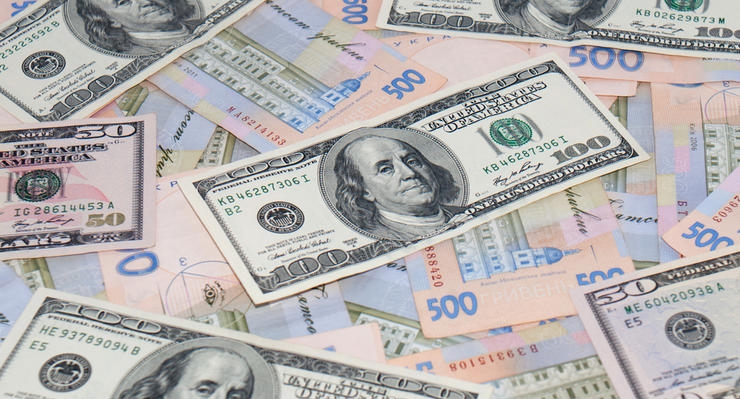The interbank dollar exchange rate rose to a record 37.6 hryvnias/$ yesterday

After the transition of the NBU from October 3 to the regime of managed flexibility of the currency exchange rate, analysts predicted a devaluation of the hryvnia from 36.6 to 37.5 UAH/$ and an approximation of the interbank dollar rate to the cash rate, as declared by the National Bank.
However, against the background of active currency sales by the National Bank, the interbank exchange rate was lower than the fixed rate for 2 months, and only this week it sharply increased from 37 to 37.6 UAH/$.
On December 22, the NBU set the official exchange rate at UAH 37.5964/$, which is 4.4% higher than last month's level.
During the period of December 11-15, the NBU sold $863.71 million on the interbank market, compared to $544 million a week before. After selling a record $3.351 billion in October, $2.457 billion was sold in November. If the NBU had allowed the exchange rate to reach UAH 37.5/$, the budget would have received an additional UAH 9-10 billion, and demand from importers and pressure on the exchange rate would have decreased.
During 2023, the National Bank sold $26.958 billion interbank and bought $217.85 million, while in 2022 it sold $26.38 billion and €1.789 billion and bought $3.27 billion and €110.97 million.
The National Bank reported that in October and early November the demand for currency was insignificant, which allowed the hryvnia to strengthen. But at the end of November and in December, the demand for the currency increased, and the NBU again intensified sales, but at the same time allowed the hryvnia exchange rate to fall. "This is a normal situation, the NBU smooths out exchange rate fluctuations and allows it to act as a corrective mechanism for the currency market and macroeconomic processes," the NBU notes.
The head of the NBU, A. Pyshnyi, said that the transition to the regime of managed flexibility was successful, the foreign exchange market remained stable, and the balance of demand and supply of currency improved. This intensified the work of the interbank, in particular, the volume of transactions between banks without the participation of the NBU increased significantly.
"The cancellation of restrictions for banks and financial institutions on the sale of cash currency to the population contributed to the minimization of the difference between the official and cash exchange rates. The connection between the cash and non-cash segments of the market has strengthened, its sensitivity to situational factors has decreased," the head of the NBU noted.
He considers the current rate determined by the balance of supply and demand, but managed by the NBU. The positive results of the transition to the mode of managed flexibility were:
- the deepening of the average daily volumes of the foreign exchange market by three times - up to $90 million without the participation of the NBU,
- a significant reduction in the difference between the cash and official exchange rates.
"These are the results of the implementation of our currency liberalization strategy," Pyshnyi concluded.


